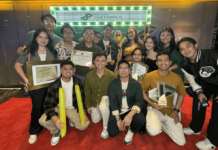READERS seem to be attracted so much to foreign literature that little attention has been given to contemporary Philippine Literature. Our literature embodies the past traumas, present ideals, and future aspirations of our country. The stories written by Filipino authors tell more of ourselves than any of our history book. They dwell on human experience, life-like characters, and substantial themes that are truly Filipino.
In this issue, the Varsitarian makes a short list of Filipino titles published in the last five years that you may read.
Novels
Umbrella Country (1999)
Bino A. Realuyo
Set during the turbulent period of Martial Law, Umbrella Country tackles poverty, human sexuality, colonial mentality, and the search for self-identity. The story is about two young brothers, Gringo and Pipo who are struggling against external and internal conflicts. They are torn between the dictates of society, the cruelty of their situation and their dysfunctional families.
The power of the book lies in its lucid prose that paints the distinct personalities of the characters and describes the gravity of the situation.
My Sad Republic (2000)
Eric Gamalinda
My Sad Republic won the 1998 Centennial Literary Prize as the Best English Novel.
Reading Gamalinda’s novel is like reading Gabriel Garcia Marquez’ One Hundred Years of Solitude with its creation of fantastical reality by combining fact and fiction.
The story is set in Negros during the Philippine Revolution against Spain leading to the Philippine-American War.
Asuncion Madrigal is a “tisay” heiress to a sugarcane hacienda where Dionisio Magbuela works as a cutter. Magbuela is also known as a healer, a shaman and folk-hero.
Meanwhile, Tomas Agustin, a landowner, is jealous of the shaman’s closeness to Asuncion. In his desperate desire to marry Asuncion, he plots to separate the two.
During the American Occupation, Agustin becomes a General and Isio a “pope.” Both of are consumed by their hatred and ambition.
Gangster of Love (1996)
Jessica Hagedorn
Gangster of Love is a follow-up to Hagedorn’s acclaimed debut, Dog Eaters. This novel explores the impact of art, the difficulties of cultural assimilation, and the mysteries of life.
In the story, Raquel Rivera (a.k.a. Rocky) emigrates to San Francisco in the early 1970’s,with her brother, Voltaire, and mother, Milagros, who has grown tired of her unfaithful husband.
In San Francisco, Rocky falls in love with rock guitarist, Elvis Chang, and had a sexual relationship with Keiko, a bisexual female photographer.
Rocky and Elvis move to New York and decide to form a punk rock band called Gangster of Love. Soon, urban despair dawns on Rocky as she encounters several problems. Her distraught life leads her to a re-examine herself and her Filipino roots.
Readers will love the book’s postmodern approach and highly dynamic prose.
Poetry
Sunlight on Broken Stones (2000)
Cirilo Bautista
Sunlight on Broken Stones won First Prize in the Epic Category of the Centennial Literary Prize in 1998. Bautista’s epic poem paints a kaleidoscopic picture of Philippine history from the 1800’s to the present, with emphasis on the period of revolution. According to Bautista, “the story of a nation relies on the testimonies of the various souls that comprise it, and each of them authenticates the others.” Voices of different personages like the poet, political leaders, the nation, national heroes, the churchmen, and the common people are artistically interwoven in the epic to tell the lessons of a dark past and hope for a positive future for the Philippines.
The poem has its focus–how the Philippine history impressed itself on different people. The events in the history in the poem include Spanish colonization, the 1898 Revolution, the invasion of the Americans and the Japanese, the Marcos’ dictatorship and the Edsa Revolution.
The epic poem bursts with emotion through lines that strike a cord in a reader’s heart and lines that hold meaning.
Eros Pinoy (2001)
Virgilio Aviado, Ben Cabrera, Alfred Yuson (eds.)
Do not read this book when your hormones are in a rush, lest you will do something you will regret.
This anthology of contemporary erotica in Philippine art and poetry can be read in one sitting. The poems include those by Cirilo Bautista, Ramil Gulle, former Varsitarian associate editor Carlomar Daoana and Ustetika winner Angelo Suarez.
Moreover, the artworks vary from the obscene to the artistic. Some are grossly graphic in appearance while some reach the level of the sublime. The art designs include the works of National Artist Ang Kiukok, Napoleon Abueva and J. Elizalde Navarro.
This is a good read if you want to test your skill in distinguishing pornography from art.
Play
Selyo at Kastilyo (2001)
Aurora Yumul
This teleplay, which won first prize in the 2000 Palanca Awards, tackles the plight of overseas Filipino workers. It tells the story of a family and a community plagued by poverty and slowly killed by a suffocating industrial environment. The
The story revolves around the family of Nana Igay whose niece, Erlinda, is a Japayuki and nephew Isagani, is a seaman. The family depends on the money and packages sent by the two as their small store is debt-laden.
The conflict starts when Isagani fails to send anything for a long time and the family stops hearing from Erlinda. The problem worsens Rafael, who is supposedly studying in Manila, comes home with his pregnant girlfriend, with the family’s debts still unpaid.
The family’s search for Erlinda is not futile. Although tragic, the search brings the characters into a re-assessment of their lives.













